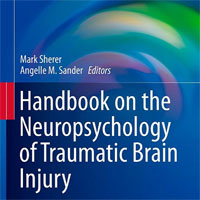Rib-Indexed POCUS vs. Chest X-Ray for Lung Recruitment Assessment in Ventilated Neonates with Moderate-Severe ARDS on Pulmonary Surfactant Therapy
Rib-indexed posterior approach POCUS is a reliable, radiation-free modality for real-time lung recruitment assessment in neonates with NARDS, demonstrating noninferiority to CXR. Notably, our study is the first to propose... read more
Causes of Death in Patients Undergoing ECPR
Refractory shock was the leading cause of death among our cohort of extracorporeal cardiopulmonary resuscitation (ECPR) patients, followed closely by neurological complications, while other causes are rare. In this post-hoc... read more
Lung Ultrasound in the Critically Ill: The BLUE Protocol
Written by a pioneer in critical care ultrasound, this book discusses the basic technique and "signatures" of lung ultrasound and explains its main clinical applications. The tools and clinical uses of the BLUE protocol,... read more
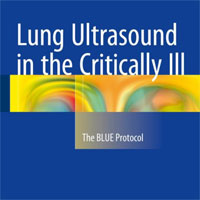
Mechanical Power Impact Normalized to Predicted Body Weight on Outcomes in Pediatric ARDS
Higher mechanical power (MP) was associated with fewer ventilator (VFD) and ICU free days (IFD). The causal effect of MP on VFD and IFD was fully mediated by the impairment in oxygenation. This is a post-hoc analysis of... read more
Anticoagulation Reversal Strategies for Warfarin Associated Acute Gastrointestinal Bleeding
Patients who received prothrombin complex concentrate (PCC) had a threefold increase in mortality compared to fresh frozen plasma (FFP), vitamin K alone, or no reversal, even after adjusting for severity of the bleeding.... read more
Endotracheal Tube Cuff Pressure Monitoring and VAP Occurrence
This study demonstrated that maintaining endotracheal tube cuff pressure at 30 cm H2O through monitoring every 8 h did not result in a greater incidence of under-inflation (pressures ... read more
Biomarkers in Trauma, Injury and Critical Care (Biomarkers in Disease: Methods, Discoveries and Applications)
This handbook systematically presents biomarkers for traumatic injuries. The book covers topics such as traumatic brain injury, liver injury, burn severity, muscle heart damage, and acute inflammation in polytrauma and their... read more
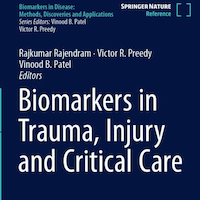
Association Between Initial Blood Product Transfusion with a Higher Plasma-to-red Blood Cell Ratio and Mortality in Adults with Severe Bleeding Following Trauma
This study demonstrates that a high fresh-frozen plasma (FFP) to packed red blood cells (PRBC) ratio (>1:1.5) is associated with reduced 24-hour and 30-day mortality rates among trauma patients with massive hemorrhage. However,... read more
Intubating the Critically Ill Patient: A Step-by-Step Guide for Success in the ED and ICU
Intubating critically ill patients is a process that requires a well-thought-out, step-by-step plan, specific to each patient. This book teaches the steps necessary to predict, prepare, perform, and provide pre and post-intubation... read more

Hemodynamic Stabilization Using CRRT and cIVNa Combination Therapy
Compared with conventional continuous renal replacement therapy (CRRT), combination therapy of CRRT and continuous intravenous sodium infusion therapy (cIVNa) increased blood pressure, enhanced urinary volume, and reduced... read more
Hemodynamic Monitoring in the ICU
This book describes the pathophysiological significance of the hemodynamic monitoring parameters available to the clinician and their role in providing reliable and reproducible information on the cardiocirculatory status... read more

A Novel Mechanism for COVID-19 Related Thrombotic Events: Platelet NO/ROS Equilibrium
The finding that platelet NO/ROS production imbalance contributes to the elevated risk of thrombotic events in COVID-19 has important clinical implications. Restoration of platelet NO production, as well as attenuation... read more
Inadequate Empirical Antibiotic Therapy in VAP: Risk Factors and Outcomes
Ventilator-associated pneumonia (VAP) caused by MDR pathogens were highly likely to receive inadequate empirical antibiotic therapy. The mortality rate and intubation duration were significantly longer in inadequately treated... read more
Red Book: Report of the Committee on Infectious Diseases
Extending an 8-decade tradition of excellence, Red Book® provides the most reliable and clinically useful information on the manifestations, etiology, epidemiology, diagnosis and treatment of more than 200 childhood infectious... read more
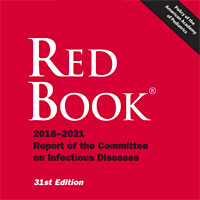
Early Acetaminophen Administration Associated with Lower Mortality Among ARDS Patients After Coronary Artery Bypass Grafting
The use of acetaminophen (APAP) at 48h after coronary artery bypass grafting (CABG)-acute respiratory distress syndrome (CABG-ARDS) was associated with lower early postoperative mortality, while shortening the length of hospital... read more
Thirst Management in Orotracheally Intubated and Mechanically Ventilated Patients
Symptom Management Theory (SMT)-based thirst management is an effective strategy. The 5 mL cold water spray method significantly reduces thirst intensity and distress in mechanically ventilated patients under fasting and... read more
COVID-19 Handbook: Navigating the Future of Healthcare
The COVID-19 Handbook: Navigating the Future of Healthcare provides factual, evidence-based information on the coronavirus disease 2019 (COVID-19) pandemic. Presented in a concise PDF format, this valuable COVID-19 resource... read more
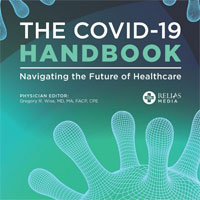
Serum MANF vs. Severity and Prognosis in Community-acquired Pneumonia Patients
This evidence demonstrated that serum mesencephalic astrocyte-derived neurotrophic factor (MANF) is positively associated with scoring criteria and poor prognosis in community-acquired pneumonia (CAP) patients. Serum... read more
Tocilizumab vs. IVIG in Patients with Severe COVID-19 Pneumonia
Severe COVID-19 patients who received IVIG in the early phase of the disease did not show better clinical outcomes in terms of mortality, hospitalization time and intensive care unit admission compared to those who received... read more
Management of Chest Trauma: A Practical Guide
75% of patients who die from trauma have injuries to the chest. The care of the chest trauma patient can be incredibly complex, require multiple specialty and sub-specialty services, and may require interventions available... read more
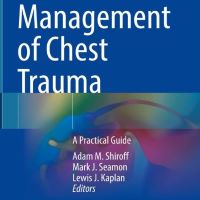
Holy Water Not so Holy: Potential Source of Elizabethkingia Pneumonia and Bacteremia in an Immunocompromised Host
This case report highlights that E. anophelis may indeed cause significant infection and should not be considered a contaminant especially in immunosuppressed individuals. The organism originates from water sources and may... read more
Levosimendan Role in ECMO for Refractory Cardiac Arrest
Levosimendan use in extracorporeal cardiopulmonary resuscitation (ECPR) did not improve survival. Neurological outcome could be representative of the short- and long-term outcomes. Future well-designed randomized trials... read more









